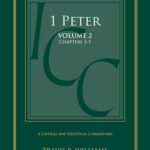The Virgin Birth and the Immaculate Conception
In today’s episode of Theologically Driven, Dr. Snoeberger mentions the distinction between the virgin birth of Jesus and the “Immaculate Conception,” a teaching of the Roman Catholic Church about Mary. Dr. Combs, former professor of New Testament at DBTS, wrote a brief explanation and critique of the Immaculate Conception in 2013. We are reposting it today as a companion to this week’s podcast episode.
During Christmas season each year, we read the accounts of Jesus’ birth in the Gospels (Matt 1:18–25; Luke 1:26–38), and we are reminded once more of our Savior’s Virgin Birth. What exactly do we mean by the Virgin Birth of Christ? Maybe that’s obvious, but let’s start with a definition. By the Virgin Birth we understand that Jesus was conceived in the womb of his mother Mary by a miraculous work of the Holy Spirit without a human father.
We must not confuse the Virgin Birth of Christ with the so-called Immaculate Conception. Many Christians incorrectly believe that the Immaculate Conception has reference to Christ. Instead, the Immaculate Conception is the teaching of the Roman Catholic Church that Mary, the mother of Jesus, was herself conceived in her own mother’s womb free from sin. The Roman Catholic Church teaches that Mary was not only free from inherited sin by the Immaculate Conception, but neither did she commit any personal sins in her lifetime. Thus, she was in fact as sinless as her son Jesus. It’s important to remember that this idea of the Immaculate Conception of Mary did not become an official doctrine of the Roman Catholic Church until 1854.
But this doctrine of the Immaculate Conception of Mary is in reality nowhere taught in Scripture. Nevertheless, the Roman Catholic Church does point to a verse in Luke they claim teaches it—Luke 1:28: “And coming in, he [Gabriel] said to her, ‘Greetings, favored one! The Lord is with you’” (NASB). You may be saying, “I don’t see where this verse teaches that Mary was conceived without sin or lived a sinless life.” And you would be right; it teaches no such thing.
However, when the Bible was translated into Latin 350 years after Luke wrote this verse, the word in the original Greek, translated “favored one” in the NASB, was translated “full of grace” in the Latin Vulgate. Literally, the Latin reads, “Hail, full of grace.” This phrase has become part of a prayer Roman Catholics pray to Mary called the “Hail Mary.” It goes like this: “Hail Mary, full of grace, the Lord is with thee.” Catholics pray to Mary because she is believed to be a coredemptress with Christ in Roman Catholic teaching.
The Latin translation “full of grace” in Luke 1:28 is not the best rendering of the original Greek word that the NASB translates “favored one.” But even the Latin translation “full of grace” does not teach that Mary was conceived without sin or lived a sinless life. The actual Greek word that we are talking about (charitoō) is used only one other time in the NT, and that is in Eph 1:6, “To the praise of the glory of His grace, which He freely bestowed on us in the Beloved.” The phrase “freely bestowed” is the same Greek word used in Luke 1:28. We could translate, “he has favored us in the beloved.” Paul is telling the Ephesians that they have been made accepted or are favored in Christ. The word does not suggest that the Ephesians were sinless any more than it suggests that Mary was sinless. Mary was favored by God and so were the Ephesians.
Not only does Scripture not teach that Mary was sinless; it teaches just the opposite. Later in Luke’s account we read, “And Mary said: ‘My soul exalts the Lord, and my spirit has rejoiced in God my Savior’” (Luke 1:46–47). Mary rejoiced in God as her “Savior.” Mary needed a savior. A sinless person does not need a savior. The idea of the Immaculate Conception of Mary is a false doctrine. We dare not disparage the mother of our Lord, but she was, like all of us, a sinner who needed Christ as her Savior.



